You have no items in your shopping cart.
Post Requirement
Painting the walls of your house is like giving it a new identity. There are so many different colours and patterns to choose from that it can be confusing to make a decision. There is so much more to painting the exteriors walls of your home than just colour combinations.
More often than not, we concentrate on the interiors of a building but only now and then do we realise that it is the exterior of a house that makes the first impression. For Indian homes, there are so many factors to be considered before fixating on the best exterior paint. Here is an ultimate guide to knowing the right kind of paint to choose which protect your walls while making it look fabulous.
Weather pattern

The climate of an area has a huge impact on the lasting ability of wall colour. Harsh weather conditions can cause painted walls to chip off. Companies are now manufacturing paints that can withstand the effects of harsh wind, hot summers, cold winters, etc., without fading away. Painting the exteriors of a building should preferably be done before the monsoon season as paint requires at least a couple of hours to dry completely in order to not be affected by rain and other weather conditions.
Colour Choice
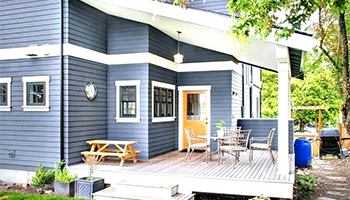
Colour plays a major part in determining the right paint for the exterior walls. Take some samples from different colour palettes and apply it on your wall. Set it aside for a few days to see how it looks on the wall. Black and other dark colours should not be used to paint an entire wall as dust that is accumulated can be easily seen. Instead, dark colours can be used to highlight prominent features of the house.
Impact on the Environment

Many paints have Volatile Organic Compounds(VOC) in them. Before deciding on a colour, check the label to see the level of VOC in it. Paints with low VOC levels are ideal for the environment and release less toxic emissions which are harmful to human health. High VOC level paints should be avoided as they release toxic emissions and have a bad environmental impact.
Exterior Furnishing
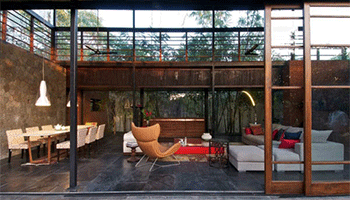
Sometimes, the exterior wall painting of a building may look incomplete. Furnishing the exteriors can add an entirely different look and beautify the exteriors of your home. Exterior furnishings can be selected based on a theme for the colours of the building.
Applying Paint
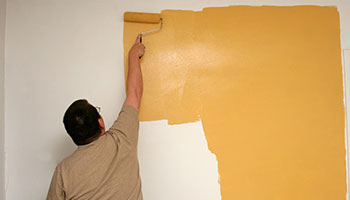
For best results, apply at least two or three layers of paint on the wall so that the colour visibly settles in. For places with hot and humid conditions, one can choose a paint that takes time to dry while in colder places, rapid drying paints should be used. The type of paint being used is a huge deciding factor in how quickly the lustre on the wall fades away.
House paints are generally divided into two kinds namely,
- Water-based Paints
- Oil-based Paints
Advantages of Water-Based Paints

Water-based paints are generally used for both interior and exterior walls. They are eco-friendly because they have naturally supportive material properties hence, there is no release of Volatile Organic Compounds (VOC). Paints are usually thinned using turpentine however, water-based paints can be thinned using water. This type of paint can be used on almost all kinds of surfaces without any pre-treatment on the walls. These paints are crack-resistant and are also resistant to yellowing over time. Most people prefer water-based paints due to these properties.
Advantages of Oil-based Paints
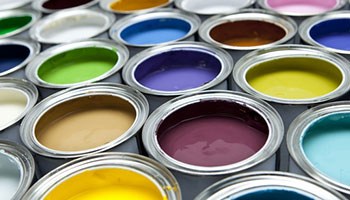
Oil-based paints are more durable than water-based paints. It is very smooth on application and may not require a second coating. Oil paint is also more long-lasting and can easily cover stained or chalky surfaces. These paints are more resistant to lower temperatures as compared to water-based paints. Paint experts have also said that oil-based paints give a vibrant look to the walls of a building.
What are the types of paints used for the exteriors of a home?
Cement Paint:
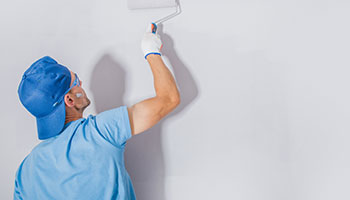
Cement Paint is a water-based paint that is used for painting the exteriors of a building or a house. Cement paint prevents dust from accumulating on the walls and stops the penetration of water into the walls. It can be used for painting walls on both the interior and exteriors of a building. The durability of this paint makes it suitable for usage on surfaces that get maximum exposure to weather such as balconies, garages, patios, etc.
Emulsion Paint:
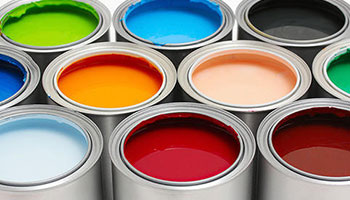
Emulsion paint is an oil-based paint that is ideal for application in areas with exposure to humidity and sunlight such as the outdoors, inside kitchens and in steam rooms. They are resistant to cracking in sunlight and do not fade easily. Emulsion paint also dries very quickly and is less prone to the accumulation of dampness, mildew and fungi.
You can consult an expert and mix up paint colours to find the right shade for your home. An important thing to note is that the colour of a wall will always seem more vibrant and intense than a smaller sample because of the larger dimensions of the wall. Paint for your home is an investment every homebuyer should make because the quality of the paint will determine the look of your house which you will be attached to for years to come.
Check out our range of paints and finishes:
Srujana T
V S Painting Contractors
posted on Sep 25, 2020 6:47:43 PM













Pranisha Alungal
posted on Apr 1, 2021 10:20:16 AM